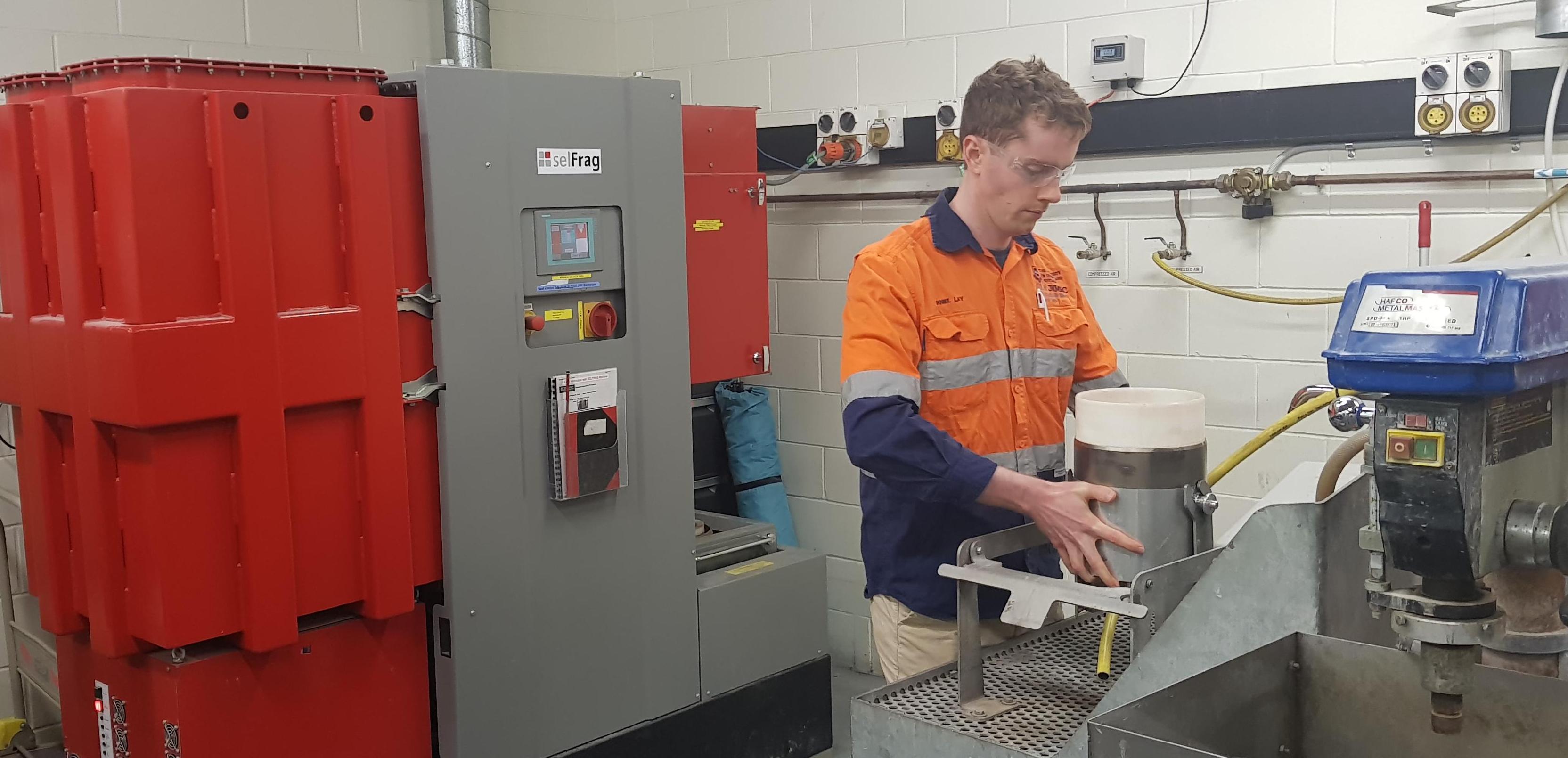The Sustainable Minerals Institute (SMI) is home to dozens of fantastic early career thinkers and future thought leaders who are already making a name for themselves, and nowhere is this more evident than in our postgraduate cohort.
Daniel Lay, a third year PhD student at the Julius Kruttschnitt Mineral Research Centre (JKMRC) who is working on the pioneering High Voltage Pulse project under Professor Frank Shi and Dr Christian Antonio, is a great example of that.
We sat down with Daniel to discuss the path that brought him to SMI and the realities of undertaking a PhD in a pioneering field.
High Voltage Pulse
“It takes a lot of energy to break rocks down into small enough sizes to do flotation and get the metal out of them. In the case of gold-copper ores, this step alone is about 36% of the total energy used on mine sites, so you really want to be focusing your efforts on the rocks that actually have metal.
“High Voltage Pulse (HVP) technology comes into the equation by harnessing what is essentially lightning to break apart only those rocks that contain metals.
“Think about it like this: if you are on a golf course, holding a golf club up, and lightning were to strike, it would hit you because you are holding the metal golf club. That’s what is happening to the rocks in HVP.”
“If a rock is highly mineralised and has lots of metal in it, using HVP is like targeting it as if it were a golf club being held up.

A fork in the path
“I studied mechanical engineering at The University of Queensland and, when I graduated with a First Class Honours degree, I actually worked for a bit in Queensland’s Coal Seam Gas industry.
“I was working for a company that installed a bunch of pipes running between Coal Seam Gas Wells and my job was, basically, pressurising them and making sure there were no leaks.
“It was interesting work but then I started to wonder if it was what I really wanted to be doing, and that led to me looking around for some masters and PhD projects.
“I really enjoyed the theoretical stuff during my undergraduate studies but it never really felt like there was enough time to properly get into it because you were always so flat out with projects. I think I always would have had the desire to return to that sort of work.
“I eventually ended up speaking to my current supervisor, Professor Fengnian (Frank) Shi, about the project I’m on now and it sounded really interesting, so I made the jump.
The realities of a PhD
“Before I started my PhD, I thought I would be reading a bunch of papers, thinking about the gaps between them, coming up with experiments to fill those gaps and, sure, running into a few challenges and overcoming them.
“I was pretty spot on, with one sidenote – the ‘running into a few challenges and overcoming them’ bit of the process has been a much larger part of the experience.
“…It’s certainly helped develop my problem solving skills and filled me with a lot more patience.
“But the reason it is challenging is because it’s something new and different – this isn’t something that has really been done before.
“There are very few people in the world doing this research. High Voltage Pulses can also be used for other applications like concrete recycling and breaking down things like old mobile phones and other bits of electrical equipment and recycling them that way, but this is quite different from what I am working on.
“It can be frustrating but you need to expect a few teething problems.
“In this research, you might be just thinking about a certain challenge or problem and that could take a few weeks.
“But I do enjoy it. It is challenging but also really satisfying.”
At the Sustainable Minerals Institute
“Undertaking my PhD at SMI has been good, I would definitely recommend it.
“At the Indooroopilly mine site we have a really close student community.
“Recently a bunch of students went out, got some pizza and played some basketball and that sort of thing happens pretty often.
“I was President of Jackals, the student society at JKMRC/BRC last year, and organised International Night. Trying out the food that people from SMI had made themselves from their home-countries and relaxing and having fun was a really nice experience, and seeing how well it all turned out was satisfying as well.
“After only six months of being at SMI I was also invited to join some of the researchers on a plant survey in Mount Isa. It was a great experience – the researchers were really helpful and gave me some great insight and guidance.
To read more about the JKMRC’s research into HVP, visit https://smi.uq.edu.au/project/high-voltage-pulse-hvp-comminution-pretreatment



